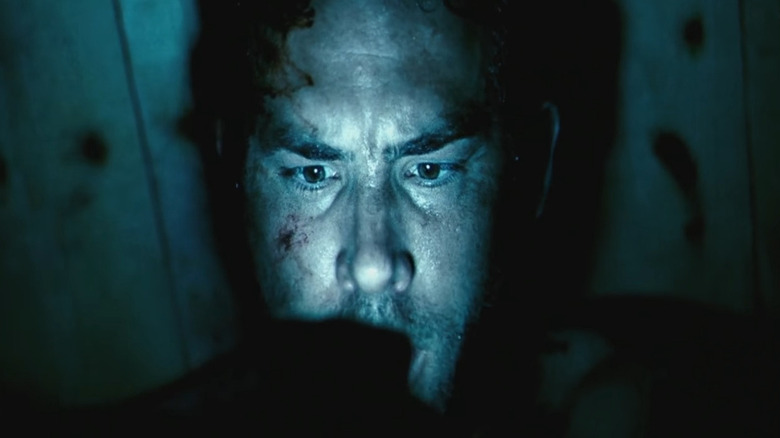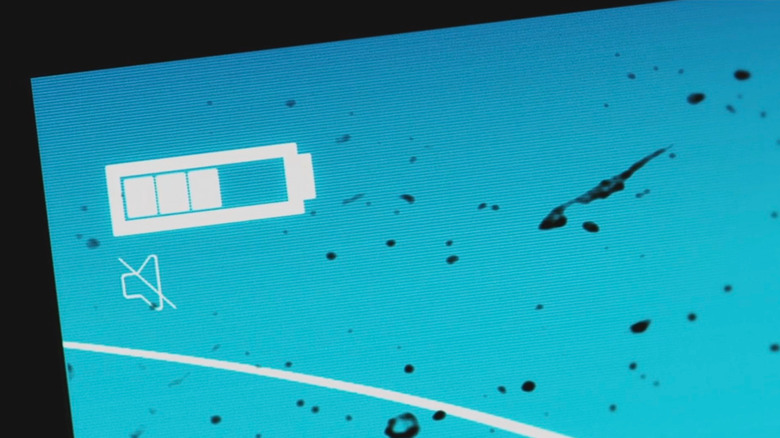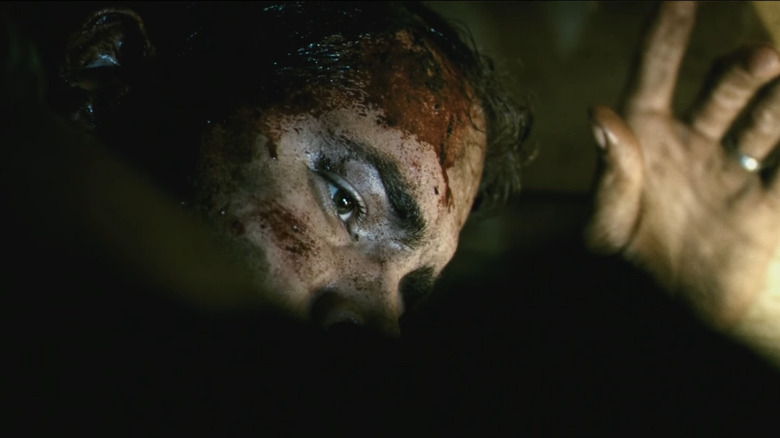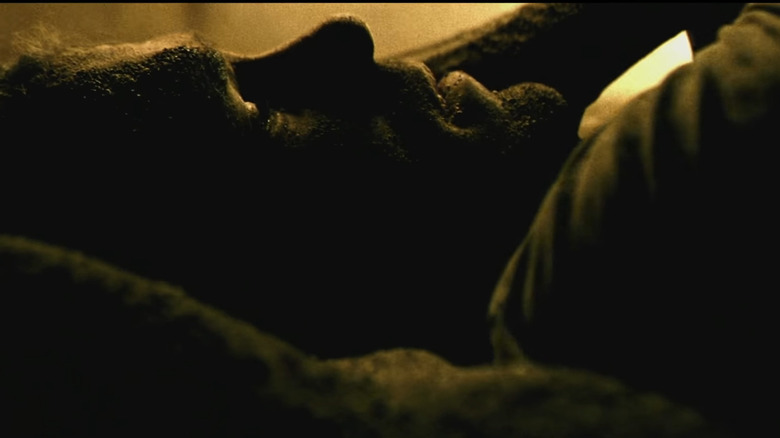The Ending Of Buried Explained
Before he was making our sides split as Deadpool, Ryan Reynolds delivered a gut-wrenching performance in the 2010 film, "Buried."
Directed by Rodrigo Cortés, the film follows an American truck driver stationed in Iraq who finds himself buried alive in a coffin following an attack. Now he must do everything he can to survive, with nothing more than his own wits and a few select items at his disposal to keep himself physically and mentally together. The tense thriller debuted at the Sundance Film Festival before being sold to Lionsgate (per Entertainment Weekly), and upon its wide release, the low-budget $2 million film made a healthy box office return with nearly $20 million worldwide (via Box Office Mojo). "Buried" garnered great critical praise as well, sporting an 87% on Rotten Tomatoes, with the site's consensus saying, "Wringing a seemingly impossible amount of gripping drama out of its claustrophobic premise, 'Buried' is a nerve-wracking showcase for Ryan Reynolds' talent."
Taking place entirely in a confined coffin, Reynolds carries the film — arguably, one of his best — almost single-handedly through his performance. He takes the audience on an emotional rollercoaster from beginning to end that is hard to forget (while definitely not for the claustrophobic) — and what a rollercoaster it is.
Despite its limitations, there's still a lot to absorb after watching "Buried," especially with its daring ending that many may not see coming. So today, let's break down the film, and see how a nerve-wracking series of events leads up to its jaw-dropping conclusion. Major spoilers ahead.
The battery that'll eventually die
The film kicks off with Paul Conroy (Reynolds) trapped in his coffin. He struggles to piece together what happened, recalling that he and several other truck drivers were ambushed by terrorists. He is able to locate a few select supplies including a lighter, some glowsticks, a flask, and a mobile phone. He is able to get a phone signal from his coffin and manages to get ahold of varying resources until he gets in touch with head of the Hostage Work Group, Dan Brenner (Robert Paterson). At the same time, he receives mysterious calls from his kidnapper, Jabir (José Luis García Pérez). Jabir urges Conroy to make a ransom video and get the government to pay $5 million if he wants to escape. Brenner does his best to move Conroy away from that direction while giving him advice on how to survive.
Conroy's only contact with the outside world throughout his situation is the cell phone provided to him. The phone continues to lose battery throughout the film, making it a perfect symbol for what the film is ultimately about — how much a person has left to go until the end. Paul goes through a wide array of highs and lows in his situation, but as things start getting more bleak, his fighting energy starts to drain faster and faster.
Is the movie all in his head?
Paul primarily uses the phone to contact authorities and try getting help. But at the same time, he also tries calling people in his life who were close to him. He makes contact with various friends and family members, including his wife Linda. Towards the end, he even sends a video out that acts as his will, where he intends to give all his belongings and savings to Linda and his son. Easily one of the most tear-jerking moments within the film comes when Paul gives his mother a call. It's sad enough that Conroy believes this might be the last time he and his mother get to speak, but there's an extra layer added when it is discovered that his mother has severe dementia. It is so bad to the point that she can hardly recall if she even has a son. He comforts her as best he can before hanging up and having a breakdown.
Featuring a character who is out of touch with reality challenges us to further question Conroy's own situation. The scenario that the movie rests on seems near impossible to escape from the get-go, so as the movie grows a more pessimistic viewpoint, we can begin to assume that the events playing out might be in his head. Every small chance he has to make it out could be Paul's mind trying to convince him that there is a way out of this. Either way, Conroy's struggle to hold on only intensifies as we reach the nail-biting conclusion.
The end is here
The very end sees Conroy ready to give up hope. An explosion occurs above his coffin which starts filling it with sand. He and Brenner believe that it likely would've killed his captors and that his chances of being rescued are nonexistent. He then gets a call from Jabir, who threatens Conroy's family if he doesn't make a video of him cutting off his finger, which he goes through with.
Shortly after, Brenner calls back with news that they've located him and are close by. Conroy calls his wife, hopeful that he will be returning. All hope is lost, however, when the unearthed coffin belongs to Mark White, a man who Brenner refers to earlier as someone they helped save from the country. Brenner deeply apologizes as the phone finally dies. Conroy accepts his fate as the coffin finally suffocates him.
The film's ending is a downer, to say the least. In a way, though, every aspect of the movie builds up to the tragic moment.
Just as the phone goes, so does Conroy's will to keep going. It all could've been in his head this time the entire time — every "conversation" an attempt to prolong and ignore the inevitable. The various government organizations could've acted faster had they not been so absorbed in their lengthy procedures, as well. In any case — Conroy, knowing he's done everything in his power to deny his fate — is finally ready to accept it. The day can't be saved for everyone, but the only way we can save ourselves is if we don't deny the truth.



